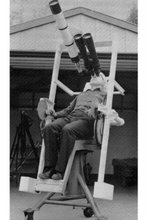Achondrites

Appropriately, stony meteorites without chondrules are termed "achondrites," except for the carbonaceous chondrites and some the enstatite chondrites. Only about 40 achondrites have been recovered and studied, and most of them are falls. These meteorites are terribly difficult for untrained observers to identify, except for the distinctive black fusion crusts on fresh falls. The achondrites do not contain abundant nickel-iron and tend to be more coarsely crystalline than other stony meteorites but not quite as crystalline as the iron meteorites. Some achrondites have the texture of regular old rocks, and many others contain angular clasts of different mineralogies and textures. Some achondrites contain angular fragments of chondrites.
Achondrites were divided by Prior into two groups based on calcium content: calcium-poor and calcium-rich. Within these two broad groups, Prior named a number of subdivisions. The calcium-poor achrondites include aubrites, diogenites, chassignites, and ureilites. The calcium-rich achrondites include eucrites and howardites, angrites, and nakhlites. These subdivisions were modified somewhat by others, but the system remains largely intact. But because the total amount of studied achondrites remains so small, each subsequent discovery has the potential to radically alter the world of meteoritology. Many individual descriptions and contributions treat only a single specimen or a few samples of achondrites. There has yet to be a comprehensive study of achondrites.
In numbers, the calcium-rich achondrites dominate the group, especially the eucrites and howardites of which more than 20 specimens are known. Some of the other classes are represented by only a single stone (angrites and chassignites), and only two nakhlites have been recognized. The aubrites and diogenites have eight specimens each. Some meteorites in these groups are interesting for the very large crystals they contain, as much as
 several centimenters long. One of the aubrites, Pena Blanca Springs (right), has a hilarious and interesting story behind it. In 1946, the meteorite fell into a swimming pool constructed by damming up a small creek near the headquarters of a large Texas ranch. More than 70kg of the stone were recovered, the phenomena accompanying the daylight fall was well documented. It may look like a piece of your driveway, but it most certainly is not!
several centimenters long. One of the aubrites, Pena Blanca Springs (right), has a hilarious and interesting story behind it. In 1946, the meteorite fell into a swimming pool constructed by damming up a small creek near the headquarters of a large Texas ranch. More than 70kg of the stone were recovered, the phenomena accompanying the daylight fall was well documented. It may look like a piece of your driveway, but it most certainly is not!Scientists have speculated about the origin of the achondrites and come up with a number of competing theories. M.B. Duke and L.T. Silver suggest that the basaltic achondrites may have originated from the Moon as secondary ejecta from meteoroid impacts. They speculated that the howardites might be fragments of the lunar highlands, and that the eucrites might have originated from the maria. This suggestion has been widely accepted by meteorite workers, but no lunar samples have confirmed this idea.
Whatever the origins of the achondrites, they constitute a group that, for the most part, are chemically and texturally distinct from the more common classes of stony meteorites. Further work on the achondrites may help to provide information on early Solar System Conditions and processes. This type of mystery should inspire young meteoriteers to join the field and unravel the riddles of these sky stones. At the very least, you should learn to identify these types of stones so that the scientists will have a larger body of data to work from. When you are on the cutting edge, every little bit helps!

3 comments:
if all these are Regular Old Rocks how can i know anymore if i have the Find of the Century?!? May all my Falls be Fresh ones!!!
now that march Madness is over, let's return to the insanity of the bits that fall from Heaven!! madness of meteorites that is! LOL!!
awesome blog, do you have twitter or facebook? i will bookmark this page thanks. jasmin holzbauer
Post a Comment